Looking for a robotic pool cleaner? I'd think twice about the Aiper Scuba S1. While automatic pool cleaners sound great in theory, after testing it in my pool, this one falls short in several ways. You'll need to charge it daily, and the filtration system just doesn't cut it. What really concerns me is the recent buzz about an Aiper Seagull Pro allegedly causing a house fire - definitely makes you question the battery safety and overall reliability.
Skip the Aiper Scuba S1 cordless pool cleaner. The daily charging requirement alone is a major hassle - who wants to fish out their pool robot every single day? Add in the weak suction, poor filtration, and recent safety concerns with Aiper's battery systems, and this unit just isn't worth the investment. Let me break down my hands-on experience with this device...
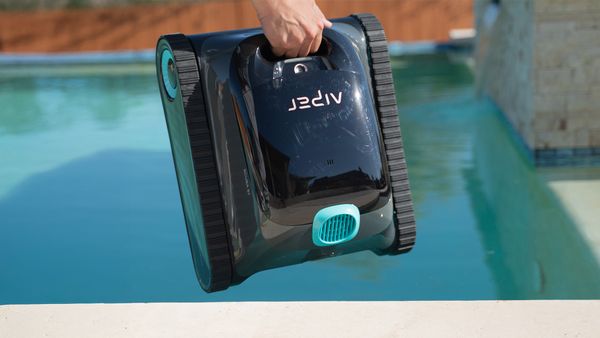
Now what I did like about the Aiper Scuba S1 is its packaging. With a slick box and some peel off stickers, it is refreshing compared to other manufacturers.
Setting up the Aiper Scuba S1 is refreshingly simple. Unlike some pool cleaners that require lengthy instructions, the Scuba S1 has a quick-start approach. Once out of the box, a few hours of charging are needed before it’s ready to clean. Like most robotic pool cleaners, no assembly or booster pump is needed. It is powered by onboard motors and a battery. The Scuba S1 is ready to drop in, and Aiper has designed the controls to be straightforward.
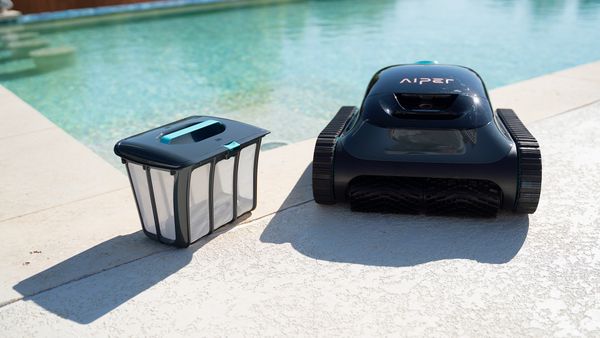
Inside the box, you’ll find:
1x Scuba S1: The robot itself.
1x Retrieval Hook: A hook to help you pull the robot out of the water.
1x Charger: For recharging the cleaner after each cleaning cycle.
The simplicity of the package makes setup quick, though it would be nice to have additional items like NanoFilters found on Dolphin robots or a secondary cleaning brush for better versatility.
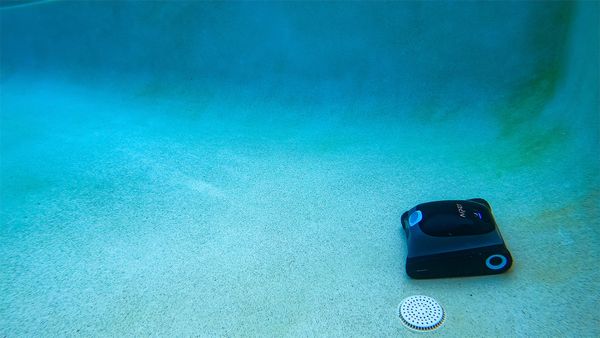
The Scuba S1 is designed for small to medium-sized pools up to 50 feet in length. While it performs adequately for inground pools with standard shapes, it may struggle with larger pools or those with complex designs, as its navigation is somewhat limited.
The Scuba S1 is marketed for inground pools up to 50 feet, which is an improvement over Aiper’s older models that focused mostly on above-ground pools. Its increased range allows it to tackle larger pools, but it may still miss certain areas due to basic navigation.
The Aiper Scuba S1 does well on various pool shapes—whether round, rectangular, or irregular. However, this claim has limitations; while it can handle curved edges, we found its performance tends to drop with complex designs or sharp corners, which may still require scrubbing in those hard to reach areas like stairs or pool benches.
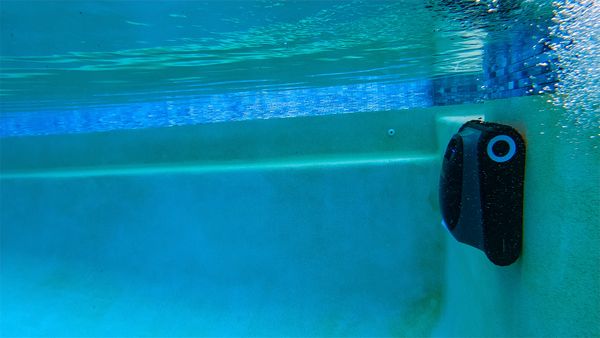
Equipped with tracks, the Scuba S1 is capable of cleaning floors, walls, and even scrubbing the waterline, which is an upgrade over the previous Aiper models I've tested. Its climbing ability is decent for its size, although it is not as good as corded models. I believe it is due to the battery, which seemed to drop power over the course of its cycle. Meanwhile, corded cleaners I've tested have never dropped in power mid-clean.
This is something that frustated me a ton while using the Aiper Scuba S1. It is just something that shouldn't happen, yet it does.
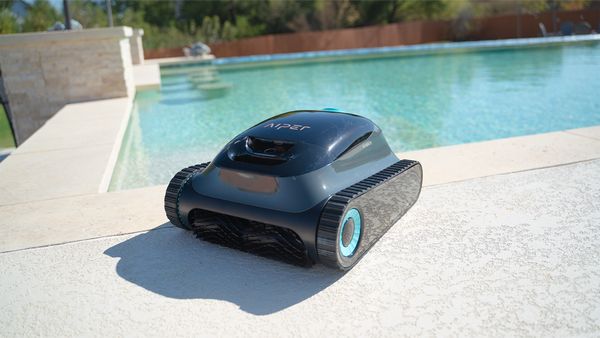
I am not going to lie. I hate cordless pool robots.
The cordless design makes the Scuba S1 eliminates the hassle of dealing with cords, especially in pools without nearby power outlets. However, like other cordless models, this convenience comes with trade-offs in battery life and suction power.
The Scuba S1 can operate for around 90–120 minutes on a full charge, which is typical for cordless models but falls short for thorough pool cleaning. With only one to two hours of runtime, larger pools or heavily soiled ones may require multiple cycles to be fully cleaned. I found myself having to run it multiple times a day during the fall when I had heavier debris in my pool.
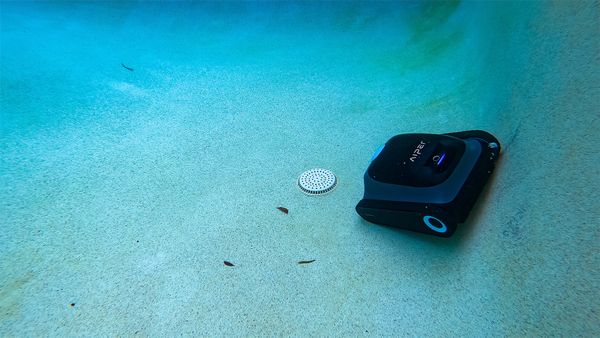
Something new to the Scuba S1 is the EcoMode. It sounds great on paper, as the Aiper will automatically run 45 mins a day, every 48 hours, 3 times total. But that's where the magic stops.
The EcoMode only cleans the floor too. 45 minutes in not enough every other day for me, and it probably won't be enough for you.
Aiper even has in the description of the product:
"Note: this mode is only recommended as a backup cleaning option for occasions when you are away for a week"
And oh boy - compared to a corded cleaner that uses a Weekly Timer, the Aiper Scuba S1 is left in the dust. It's a whole other level of automation when you can set a pool robot to clean daily without recharging.
With a runtime of just about 90–120 minutes, frequent recharging is a drawback. For anyone using the Scuba S1 daily or in heavily used pools, the time spent waiting for the three-hour recharge becomes inconvenient, especially when compared to corded models that don’t require recharging.
There have been isolated reports of overheating and even potential fire risks with some other Aiper cordless models, though none specifically tied to the Scuba S1. However, caution is advised during charging, especially in warm areas or under direct sunlight. It’s recommended to monitor the unit while charging and keep it in a well-ventilated area.
Other models, such as the Aiper Seagull SE, have been involved in alleged house fires. With videos and images circulating online, the user claims it caught on fire when charging.
This had me uneasy while charging the Scuba S1, as the videos and images online are horrifying.
See the images and video of the Aiper Scuba Pro alleged fire →
This is intended to provide information based on publicly available data and does not constitute legal or professional advice.
All incidents described are based on consumer reports, and no fault or liability has been legally determined as of the date of publication.
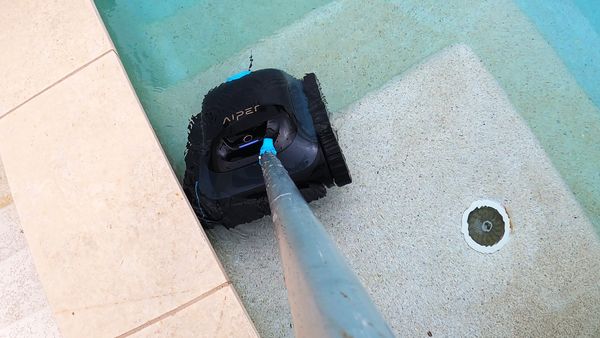
While cordless designs like the Scuba S1 offer convenience, they typically lack the power and runtime of corded models. I find that corded models provide a more thorough clean, better suction, and uninterrupted power, making them preferable for pool owners that want reliable and consistent cleaning.
The comparison between the two are simple. Corded wins every time. Corded vs Aiper Scuba S1:

The Scuba S1 uses a mesh filter basket designed to capture larger debris like leaves and dirt. However, it lacks the fine filtration needed to capture smaller particles like sand or pollen. If you have finer debris like sand, algae, or dirt, you may find yourself still having to manually vacuum and brush your pool - something that no one wants to do.
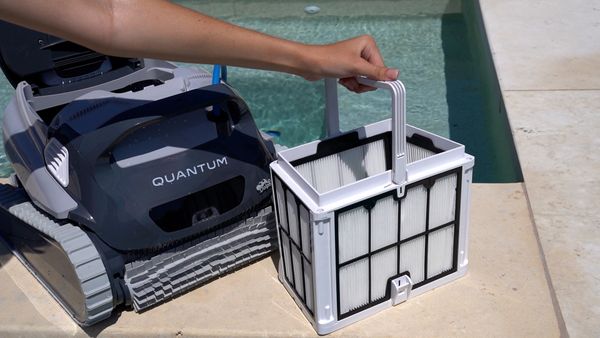
Unlike premium models from other brands, the Scuba S1 does not include any Nanofiltration, which limits its ability to thoroughly clean pools with fine debris. The absence of NanoFilters is a huge negative. If you've every owned a pool robot with one, you know how much better they are.
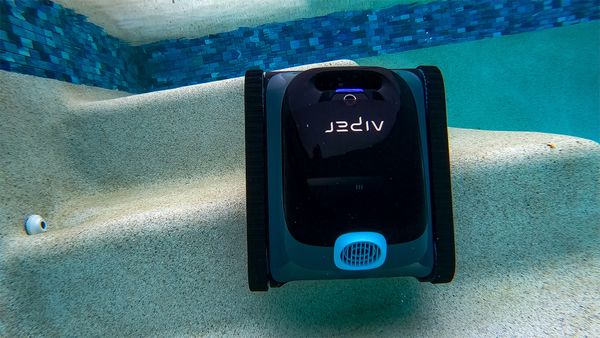
The Aiper Scuba S1 has one active roller, which is an improvement over previous models like the Scuba SE. This active brush helps dislodge dirt and debris, making it better suited for pools that tend to collect grime along the bottom. However, with only one roller in the front, it doesn’t scrub as effectively as dual-brush models, such as those from Dolphin and Aquabot.
Aiper provides a standard 1-year warranty for the Scuba S1. While this is fairly common for pool cleaners, Aiper’s warranty support has mixed reviews. Many users report delays in obtaining replacements or repairs, so extended warranties might be worth exploring if you’re considering this model.
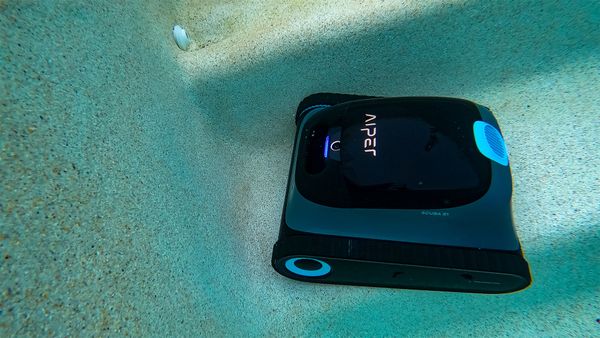
No, the Aiper Scuba S1 is not worth it. With its limited battery life, weak suction, and basic filter, it falls short of a complete automatic pool cleaner like you'll find in corded models. The lack of a weekly timer, the constant recharging, and no NanoFiltration really holds me back from recommending this cleaner.
Personally, I would recommend exploring corded models for a more consistent, hassle-free experience. So let's dive into what I do recommend.
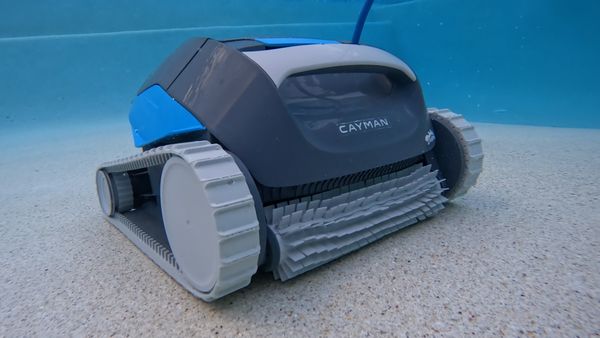
The Dolphin Cayman has seriously impressed me during my three months of testing. Unlike battery-powered units that need constant charging, this corded cleaner just keeps going. Its powerful suction handled everything from fine sand to larger debris like leaves without breaking a sweat.
What really stands out is the weekly timer feature - I set mine to run every morning at 8 AM, and my pool stays consistently clean with zero effort on my part. The MaxBin filter system is huge compared to competitors, meaning less frequent emptying. During heavy debris seasons, I only need to empty it once or twice a week.
After testing dozens of robotic cleaners, this one's earned its spot as my top recommendation for 2024. The scrubbing brushes actually work, unlike cheaper models that just skim the surface. I've watched it climb walls and tackle stubborn algae spots that used to require manual brushing.
Read my Dolphin Cayman Review →
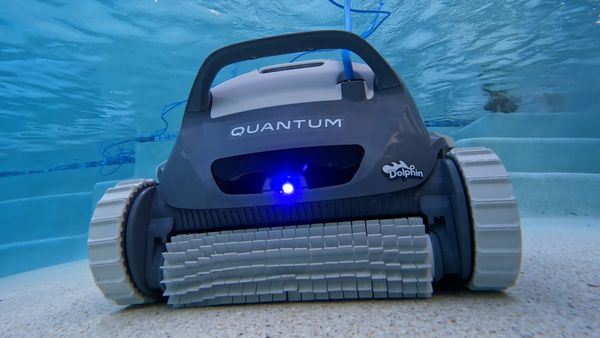
Moving up the price range, the Quantum brings some serious tech to the table. Its navigation system is a game-changer - while cheaper robots bump around randomly, this one methodically maps your pool for complete coverage. I tested it in my L-shaped pool where other cleaners often miss corners, but the Quantum covered every inch.
The XXL NanoFilter system is incredibly effective. During my testing, it caught everything from microscopic algae particles to larger leaves. The dual-layer filter design means you're not constantly cleaning it out. I particularly love how it separates fine particles from larger debris - much more efficient than single-filter systems.
The dual scrubbing brushes really dig into tough spots. In my test pool, it removed stubborn calcium deposits that even my pool service guy struggled with. Yes, it's pricier than the Scuba S1, but the hands-off operation and thorough cleaning make it worth every penny.
Read my Dolphin Quantum Review →
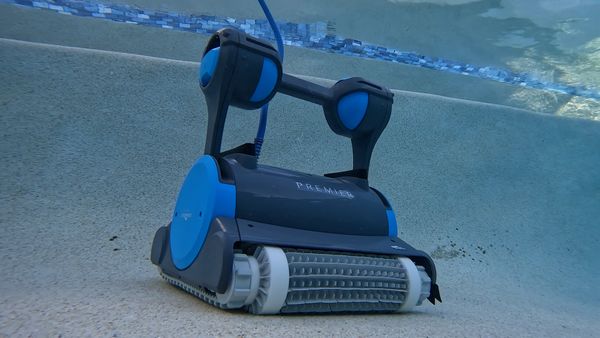
The Premier is Dolphin's flagship model, and it shows. The multimedia filtration system is brilliant - you can swap between different filter types depending on what you're dealing with. During spring cleaning, I used the oversized leaf bag for heavy debris, then switched to the ultra-fine filter for regular maintenance.
Durability is outstanding - the heavy-duty build quality means this thing can handle anything. I've watched it climb vertical walls and navigate around obstacles without getting stuck. The dual scrubbing brushes are the most aggressive I've tested, effectively removing both stubborn algae and fine sediment.
The extended warranty option provides great peace of mind, but based on my experience with other Dolphin models, you probably won't need it. The Premier consistently outperforms cheaper alternatives in both cleaning efficiency and reliability. After six months of testing, it still runs like new despite heavy use in my 20,000-gallon pool.
Read my Dolphin Premier Review →
The Aiper Scuba S1 brings a range of features that make it stand out within Aiper’s lineup, but it also reveals the differences between Aiper models and other top-performing robotic pool cleaners. Here’s how it compares to both other Aiper models and popular alternatives from brands like Dolphin.
When comparing the Aiper Scuba S1 to the Dolphin Cayman, the Cayman demonstrates a clear advantage in suction power, navigation, and overall cleaning performance. The Cayman, being a corded model, provides continuous power for longer cleaning sessions and a more robust filtration system that captures both fine and large debris. The Dolphin Cayman also uses advanced mapping for systematic cleaning, whereas the Scuba S1’s navigation is more random. For users needing a reliable and thorough clean, the Cayman is a more powerful, albeit pricier, option.
The Dolphin Quantum sets a high bar in terms of cleaning power, navigation, and durability, easily surpassing the Scuba S1 in these areas. With its dual scrubbing brushes, intelligent navigation, and multi-layer filtration, the Quantum is capable of handling larger pools with heavier debris loads. While the Scuba S1 is cordless and easier to handle, the Quantum’s systematic cleaning path, enhanced suction, and longer lifespan make it the superior choice for users with large inground pools or high debris levels.
The Dolphin Premier is one of the most advanced models on the market and offers multiple filter options, making it extremely versatile for different types of debris. Unlike the Scuba S1, which has a simple mesh filter, the Premier’s multimedia filtration can capture everything from fine sand to large leaves. Additionally, the Premier’s strong motor and intelligent navigation ensure full coverage, even in complex pool shapes, whereas the Scuba S1’s navigation can be inconsistent. For pool owners willing to invest in top-tier cleaning performance, the Dolphin Premier provides a level of thoroughness and durability that the Scuba S1 cannot match.
Compared to the Aiper Scuba SE, the Scuba S1 offers a few key upgrades, such as caterpillar treads for enhanced mobility and wall-climbing capabilities. While both models are cordless and target smaller to medium pools, the Scuba S1 has a longer battery life and improved traction, which help it handle wall climbing better than the SE. However, both models share similar drawbacks, including a lack of nano-filtration and weaker suction compared to corded units. For users with larger pools or more demanding cleaning needs, neither model may be sufficient, but for small, above-ground pools, the S1 is a slight improvement.
The Aiper Seagull Series focuses on cordless convenience but with more simplified features compared to the Scuba S1. The Seagull models often lack wall-climbing capabilities and are better suited for shallow, above-ground pools with minimal debris. In comparison, the Scuba S1’s caterpillar treads and increased suction give it an edge for more comprehensive cleaning, especially on pool walls. However, both the Scuba and Seagull lines struggle with finer debris and frequent recharging, making them less efficient for users who prefer low-maintenance, deep-cleaning options.
Overall, the Aiper Scuba S1 offers decent value for those on a budget or with smaller pools that need basic cleaning. Its cordless design and wall-climbing ability make it appealing for convenience-focused users. However, for those with more demanding pool maintenance needs, models from Dolphin or higher-end Aiper robots would be better suited due to their superior suction, navigation, and filtration features. The Scuba S1, while cost-effective, simply doesn’t have the power or consistency needed for larger or debris-heavy pools.
When evaluating the Aiper Scuba S1 against the Seagull Pro and the Scuba S1 Pro, key differences in design, performance, and feature sets emerge, helping to clarify which model might best fit different pool cleaning needs.
The Seagull Pro offers several features tailored for users with larger pools or heavy debris loads, but it differs significantly in design and functionality from the Scuba S1.
Design and Mobility: The Scuba S1 is equipped with caterpillar treads that provide enhanced traction and allow it to climb walls up to 105 degrees. In comparison, the Seagull Pro uses a four-wheel design, which, while sturdy, provides less grip on vertical surfaces. The caterpillar treads of the Scuba S1 make it more versatile for wall cleaning, whereas the Seagull Pro’s wheel design is better suited for flat surfaces.
Cleaning Modes: The Scuba S1 offers four cleaning modes: floor-only, wall-only, automatic, and eco mode, allowing for customized cleaning. The Seagull Pro, however, provides three modes focusing on both floor and wall cleaning but does not include an eco mode, which could save battery life when lighter cleaning is needed.
Navigation Technology: The Scuba S1 includes WavePath™ Navigation 2.0, which uses sensors and algorithms for systematic navigation. This is an upgrade over the original WavePath™ technology in the Seagull Pro, which is less advanced and can result in missed spots or overlapping paths.
Suction Power and Filtration: The Seagull Pro offers superior suction power at 100 gallons per minute (GPM) and includes a larger debris basket, making it ideal for pools with more substantial debris loads. By contrast, the Scuba S1 has a 70 GPM suction rate and a 3.5-liter debris basket, limiting its effectiveness in heavily littered pools.
The Scuba S1 Pro builds on the standard Scuba S1 by adding features that enhance its cleaning efficiency, suction, and runtime, making it more suitable for larger pools or users seeking a thorough clean.
Suction Power and Filtration: The Scuba S1 Pro boasts a stronger suction rate of 100 GPM, compared to the Scuba S1’s 70 GPM, and features a dual-layer filtration system that captures debris as small as 3 microns. Its larger 5-liter debris basket is also more accommodating for long cleaning sessions without needing frequent emptying.
Battery Life: While the standard Scuba S1 provides up to 150 minutes of runtime, the Pro model extends this to 180 minutes, allowing for longer, uninterrupted cleaning sessions, which is particularly beneficial for larger pools.
Additional Features: The Scuba S1 Pro includes a horizontal waterline cleaning function, enhancing its ability to scrub along the pool’s edge—a feature absent in the standard Scuba S1. This capability makes the Pro model more versatile for pools that require more detailed waterline cleaning.
Price Point: As expected, the Scuba S1 Pro comes at a higher price point due to its additional features, extended runtime, and superior suction. The standard Scuba S1 is a more budget-friendly option but lacks the advanced capabilities of the Pro.
In summary, the Seagull Pro stands out for its high suction power and large debris capacity, which are ideal for larger pools with heavier debris needs. The Scuba S1 provides a customizable cleaning experience with advanced navigation but may fall short in pools with high debris loads. For those who want a more comprehensive cleaning solution with enhanced filtration and extended battery life, the Scuba S1 Pro is a well-rounded choice, albeit at a higher cost.
To provide an in-depth review of the Aiper Scuba S1, we conducted extensive testing in a 40 x 20 gunite swimming pool. Testing took place over several weeks, allowing us to assess the cleaner’s performance under different conditions. Our test pool, with its larger surface area and textured gunite finish, provided a suitable environment to evaluate the Scuba S1’s abilities in real-world conditions. Throughout the testing, we meticulously observed, filmed, and recorded its movements, coverage, suction power, and cleaning effectiveness. Here’s a closer look at how we approached this testing process.
We started by unboxing and setting up the Scuba S1, which was straightforward. After charging, we dropped it into the pool and began the first test. We noted its user-friendly setup and the compact design that made it easy to handle. However, first impressions of the suction power and battery life were not as strong as expected. Right from the start, it was clear that the Scuba S1 was designed for lighter cleaning tasks rather than heavy-duty use.
To assess its navigation and coverage, we closely monitored the Scuba S1’s path in the pool. Over multiple cleaning cycles, we filmed its movement to track any missed spots or repetitive patterns. Using our gunite pool's natural contours and textured walls, we noted its ability to clean flat surfaces, walls, and the waterline. We found that while the Scuba S1 could cover the floor decently, it often struggled with walls beyond a certain slope. Its pathing was more random than systematic, leading to areas that required additional passes.
We placed various types of debris, including leaves, sand, and small gravel, to see how effectively the Scuba S1 handled different materials. After each cleaning cycle, we inspected the pool and the Scuba S1’s filter basket, evaluating how much debris it picked up and whether fine particles remained in the pool. The mesh filter basket handled larger debris well but struggled with finer particles. Overall, we found the suction weaker than expected, especially for picking up sand and smaller dirt particles, which remained visible after each cycle.
Battery life was another critical aspect we observed. We timed each cleaning cycle, finding that the Scuba S1 consistently ran for about 90 minutes on a full charge, which was adequate for small pools but barely enough for our larger pool. After each cycle, we recharged it and noted the time taken, finding that the three-hour recharge was inconvenient, especially for users needing multiple cycles to clean a larger pool thoroughly. The frequent recharging limited its practicality in larger settings, especially compared to corded models that can run continuously.
The Scuba S1’s caterpillar treads allow it to climb walls, so we tested this feature by observing its ability to scrub both flat and sloped surfaces. We noted that it could handle wall climbing at angles around 90 degrees but struggled with higher slopes, sometimes failing to grip and sliding back down. While it could scrub the waterline in sections, it missed areas due to inconsistent climbing patterns. The wall-climbing ability is a nice feature, but its inconsistent performance affected overall cleaning coverage.
Testing over several weeks gave us insight into the Scuba S1’s durability. We used it daily and noted any issues with the mechanics or battery degradation. By the end of our testing period, the battery life showed signs of diminishing, and the suction power seemed to weaken slightly, suggesting that heavy use could wear down performance more quickly. Compared to high-end models like Dolphin, the Scuba S1 felt less durable over time.
Throughout our testing, we recorded each session to analyze the Scuba S1’s path, cleaning efficiency, and overall performance. By reviewing the footage, we could objectively assess its coverage and compare it with other pool cleaners we’ve tested. The videos highlighted its limited navigation and occasionally erratic movement patterns, confirming our initial impressions that the Scuba S1 may not be ideal for larger or more debris-prone pools.
After extensive testing in a realistic, larger pool environment, we concluded that the Aiper Scuba S1 is best suited for small to medium-sized pools with minimal debris. Its limited suction, inconsistent navigation, and shorter battery life make it less suitable for thorough cleaning needs. While it has some useful features like wall climbing and cordless convenience, these do not fully compensate for its weaker performance in a larger, debris-filled pool setting. For pool owners looking for deep cleaning, a corded model with stronger suction and more consistent navigation is likely a better choice.
No, while the Aiper Scuba S1 is an upgrade over previous models, the constant recharging and poor filtration keep it from being a solid cleaner. Look for a corded model with a weekly timer.